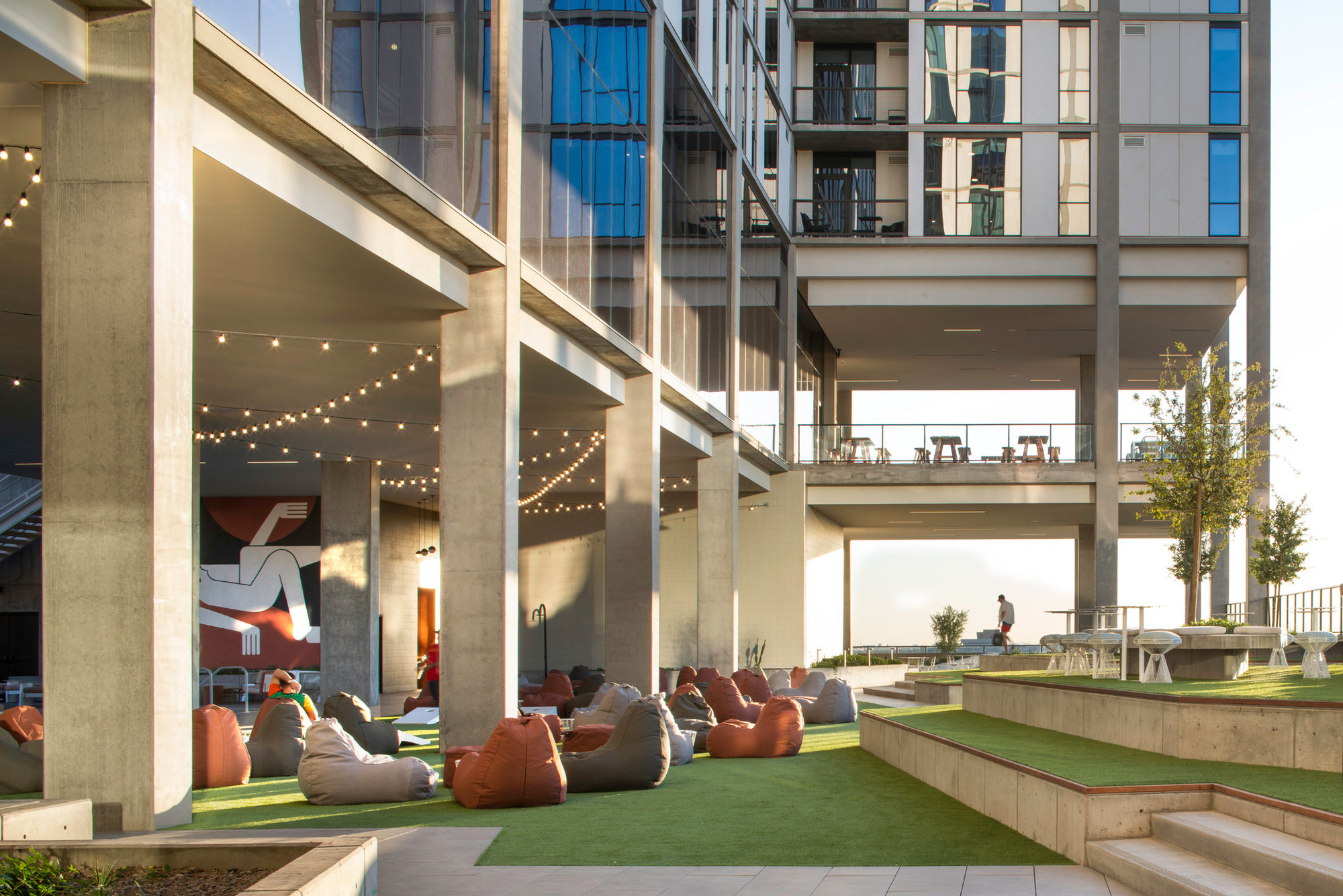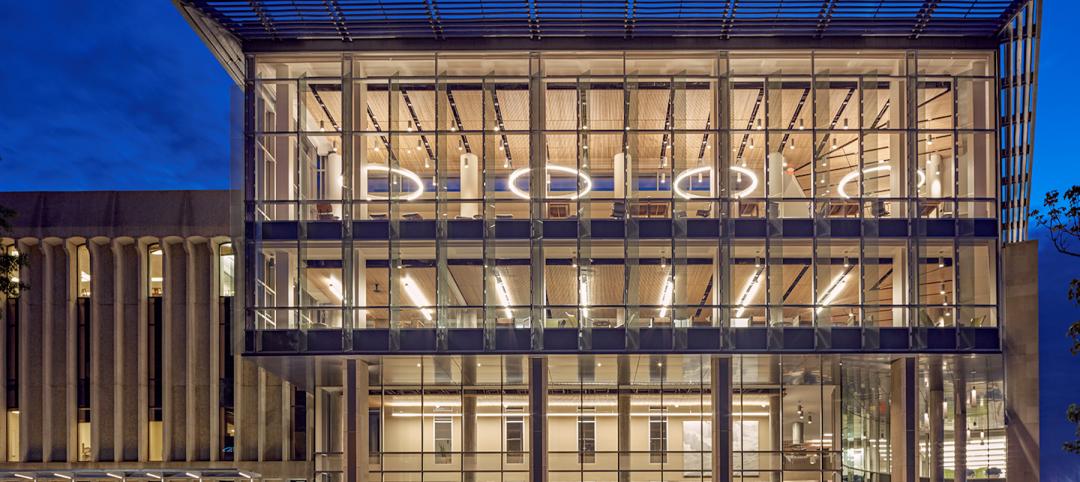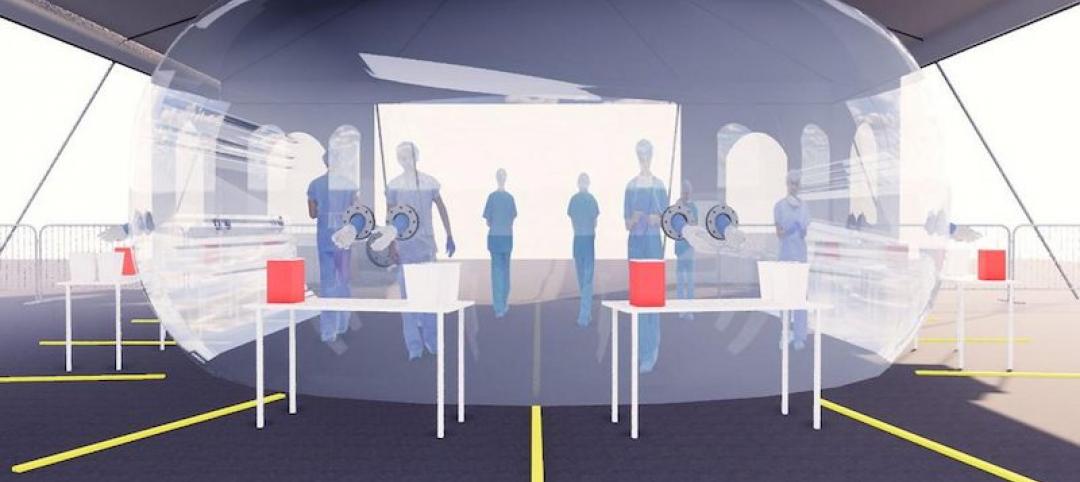Since the COVID-19 pandemic, there has been an increase in the amount of time individuals spend in their residences. This has led to a rise in conversation on health and well-being, as people are increasingly cognizant of the impact built environments have on their physical and mental health. In response to these changes, we’ve identified design elements multifamily residential developers can use to maximize space while creating a positive impact on residents and the planet.
Co-working spaces
In an era of remote work, which can feel isolating, shared co-working areas have become more important than ever for mental health and well-being. In our hi-rise residential community, The Link, our team incorporated amenities targeted to creative businesses that includes an incubation and maker space for start-ups. These co-working areas provide a space for individuals to leave their private home offices and experience a sense of community, which is proven to reduce stress, foster connection, boost productivity, and decrease loneliness.
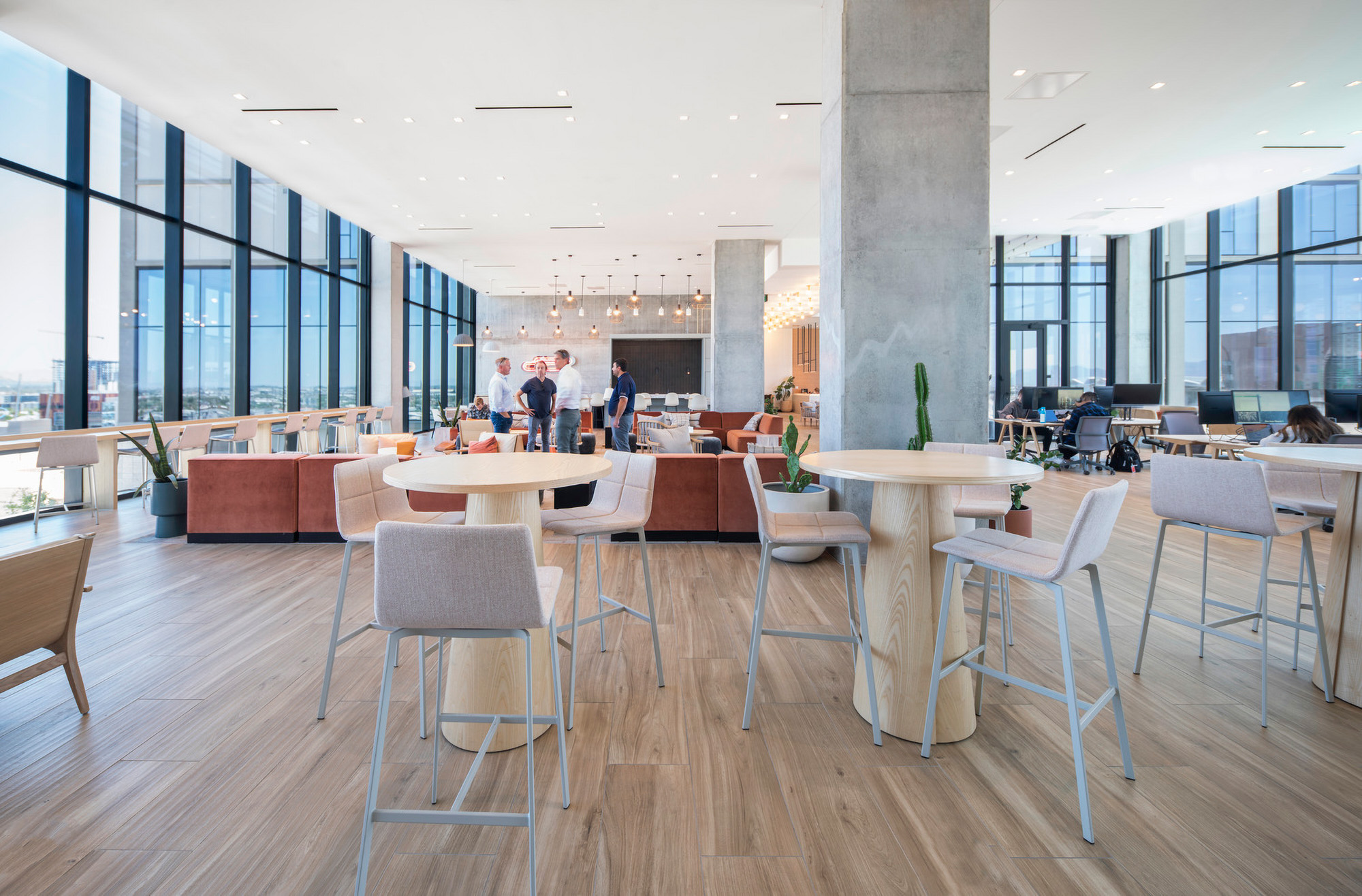
Community wellness rooms
Wellness in hi-rise residential communities can often be one dimensional—a fitness room with standard equipment for residents’ use. X-Phoenix pushes the boundaries of what wellness means—spaces that address both the body and the mind.
Through careful design, we provided wellness spaces for mindfulness events, meditation, and other community-engaging fitness events. Through offering various events that appeal to many tastes and skill levels, these wellness rooms also build community—fostering well-being for residents.
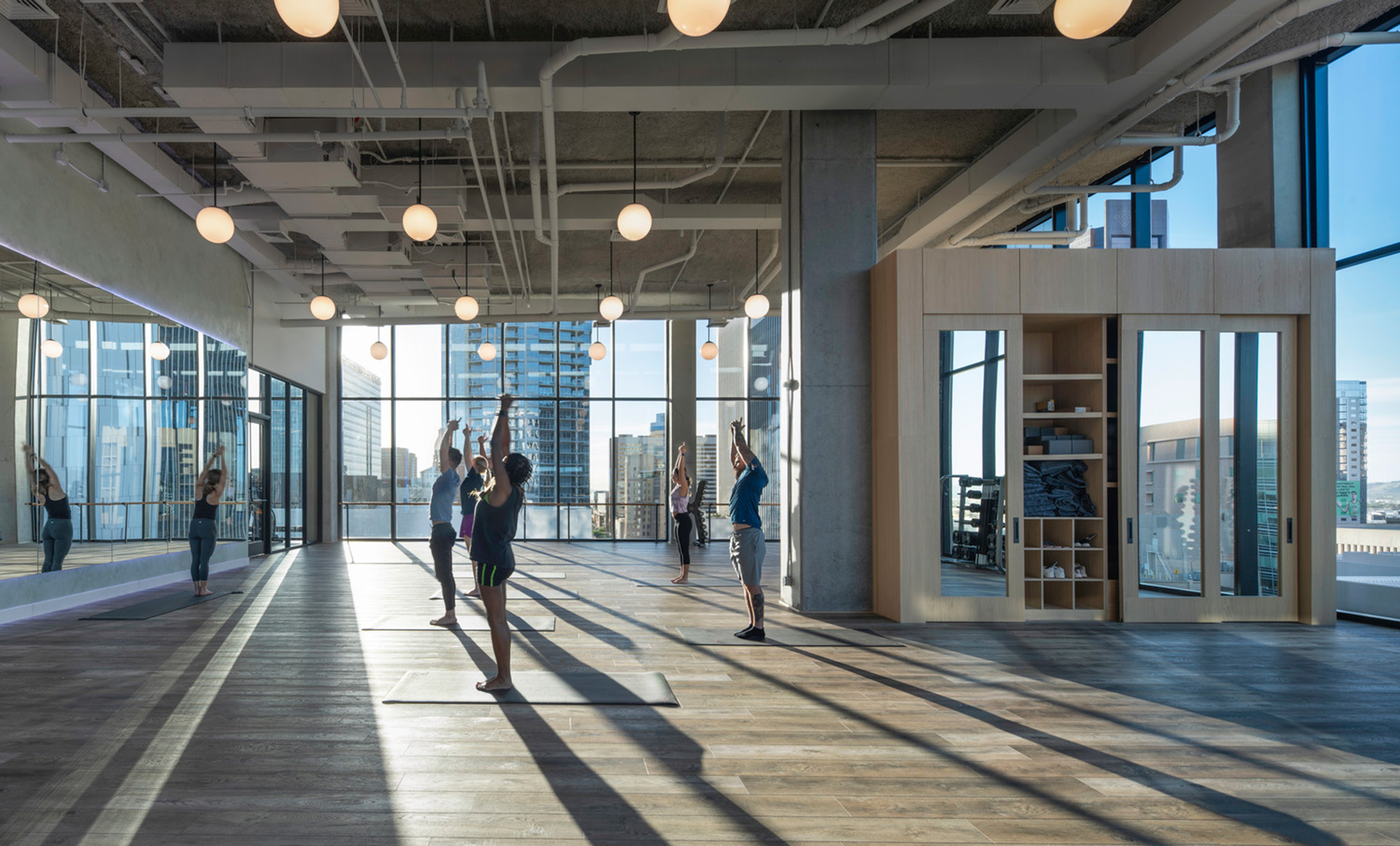
Biophilic design and materiality
Sustainable design is more than just a method for decreasing our impact on the world at large—our personal well-being is also positively affected by green design choices. Providing spaces for plants to thrive within a residence provides health benefits and also allows people to connect with the natural environment.
For our mixed-use residential community, Uncommon Flagstaff, our team incorporated greenery throughout the amenities, adding biophilic touches to enhance user wellness. Materiality was selected based on recycled content, composition transparency, production impacts, and low volatile organic compound (VOC) emissions.
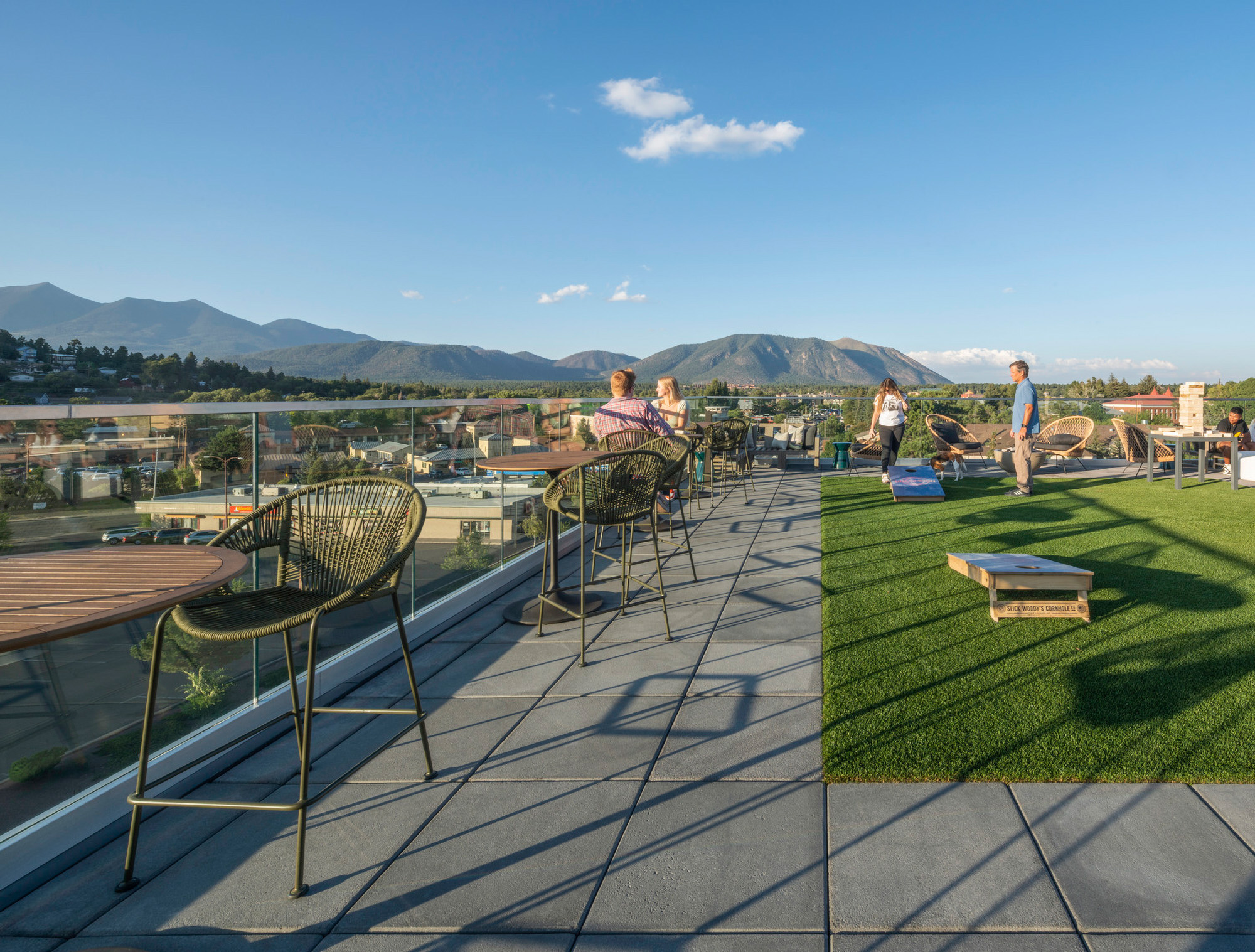
Creating neurodivergent spaces
Neurodiversity refers to how someone processes information different from most individuals. Designing with neurodiversity in mind means evaluating what is being put into a room and how it affects the body as a whole.
Factors to consider range from everything that engages with the sense, from texture, sound, layout, and light to the shape and function of furniture. We can be mindful with design by including aspects such as adjustable lighting, soothing colors, biophilic elements, and defining private and open spaces to ease navigation.
Additional areas we design with resident well-being in mind:
Thoughtful transitions
Urban environments can be vibrant and sometimes chaotic places. Our team designs considering the entirety of the resident’s journey throughout the day and how each physical transition they encounter enables them to effortlessly prepare for the next experience. Orchestrating the residents’ experience from the outside world to the comfort and decompression of their private space is important for creating a pleasant user experience and maintaining long term leases.
We design by incorporating thoughtful transitions as we move from City to lobby, lobby to residence, and into the resident’s private space. Transitional elements that encourage mental well-being are integrated into the building design including consideration about what the ideal corridor layouts, variety in ceiling planes, and material selections which allow individuals to decompress as they move physically and mentally from one zone to another.
Sustainable lighting strategy
This involves early planning to create a building footprint that directionally maximizes natural light. Following footprint planning, we strategically place windows to optimize natural light, with coatings selected to increase efficiency. By layering warm lighting, we’re able to convey a sense of comfort in the spaces.
Shared storage for recreational gear
With the rise of the sharing economy for bikes, skis, kayaks, and more, developers can promote active lifestyles amongst their residences by providing secure common storage. Developers can reduce storage within the individuals’ residences. At Uncommon Flagstaff, we designed a common bike storage and bike shop for residents use.

Urban environments play an essential role in shaping human health and well-being. With the current climate crisis and inflationary housing market, more people are looking to make urban rentals their long-term or forever home, rather than a stop on the way to becoming homeowners. Residents are becoming more aware and selective when it comes to the strategic and sustainable design of developments. To attract and maintain residents, urban spaces must be developed through the framework of creating sustainable and healthy environments to be mindful of both immediate and long-lasting benefits.
More from Author
Shepley Bulfinch | Aug 12, 2024
Planning for growing computer science programs
Driven by emerging AI developments and digital transformation in the business world, university computer science programs are projected to grow by nearly 15% by 2030.
Shepley Bulfinch | Jul 11, 2024
3 considerations for designing healthy, adaptable student dining
Amanda Vigneau, IIDA, NCDIQ, LEED ID+C, Director, Shepley Bulfinch, shares three ways student dining facilities have evolved to match changes in student life.
Shepley Bulfinch | Jul 6, 2023
The responsibility of adapting historic university buildings
Shepley Bulfinch's David Whitehill, AIA, believes the adaptive reuse of historic university buildings is not a matter of sentimentality but of practicality, progress, and preservation.
Shepley Bulfinch | Jun 2, 2023
Designing a pedestrian-focused city in downtown Phoenix
What makes a city walkable? Shepley Bulfinch's Omar Bailey, AIA, LEED AP, NOMA, believes pedestrian focused cities benefit most when they're not only easy to navigate, but also create spaces where people can live, work, and play.
Shepley Bulfinch | Apr 5, 2023
Carole Wedge, former Shepley Bulfinch President and CEO, retires after 37 years
Wedge’s 37-year career at Shepley Bulfinch evolved a historic firm into a national design practice.
Shepley Bulfinch | Aug 8, 2022
The technology balancing act
As our world reopens from COVID isolation, we are entering back into undefined territory – a form of hybrid existence.
Shepley Bulfinch | Jul 26, 2022
Better design with a “brain break”
During the design process, there aren’t necessarily opportunities to implement “brain breaks,” brief moments to take a purposeful pause from the task at hand and refocus before returning to work.
Shepley Bulfinch | Jul 11, 2022
Student life design impacts campus wellness
As interior designers, we have the opportunity and responsibility to help students achieve deeper levels of engagement in their learning, social involvement, and personal growth on college campuses.
Shepley Bulfinch | Jun 8, 2022
Welcome to the hybrid library
Libraries have grown to become the intellectual and social hubs of campus, where, prior to March 2020, students, researchers, and faculty gathered to collaborate and connect.
Shepley Bulfinch | Jul 14, 2020
Is there a way to test for Covid-19 without PPE?
We developed a unique design concept: a testing booth that allows healthcare workers to administer tests without using PPE or being exposed.


